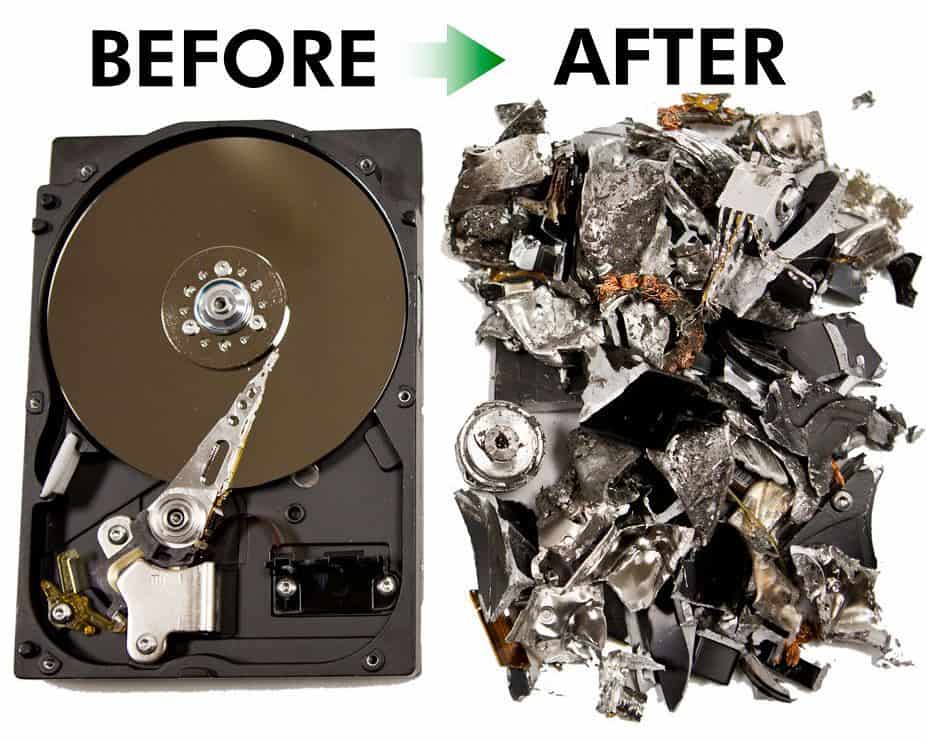Top Tips for Ensuring Secure Data Destruction in Your Cyber Security Strategy
Top Tips for Ensuring Secure Data Destruction in Your Cyber Security Strategy
Blog Article
Discovering the Relevance of Data Damage in the Context of Computer Safety Providers and Protecting Confidential Information
In a period where data breaches are progressively typical, the relevance of efficient information destruction can not be overstated. What approaches can organizations execute to enhance their information devastation protocols?
Understanding Information Damage
Data destruction is a crucial element of computer safety that includes the long-term removal of data from storage space tools to avoid unapproved gain access to and potential data violations. In a progressively electronic landscape, companies deal with increased dangers related to sensitive info being improperly accessed or exploited. Reliable information destruction safeguards versus these hazards, guaranteeing that confidential dataâEUR" such as consumer information, intellectual property, and economic recordsâEUR" can not be recovered after disposal.
Recognizing the significance of data devastation prolongs beyond plain compliance with lawful and regulative frameworks; it is important for keeping organizational stability and trust. When data is incorrectly managed or inadequately destroyed, the effects can be severe, consisting of monetary loss, reputational damage, and lawful liabilities.

Methods of Information Elimination

One widespread method is data wiping, which includes overwriting existing information with arbitrary patterns numerous times. This strategy provides the initial information irretrievable, making it a preferred choice for organizations looking for to protect secret information.
Another technique is degaussing, which makes use of an effective magnetic field to disrupt the magnetic domains on storage gadgets, successfully removing the data. This method is especially efficient for magnetic media yet is not applicable to solid-state drives.
Physical damage is an additional robust approach, squashing or involving the shredding of storage gadgets. This method assurances that data healing is practically difficult, making it suitable for very delicate info.
Finally, encryption can act as a corresponding technique to data removal. By encrypting information prior to deletion, companies can include an added layer of security, ensuring that even if remnants are recuperated, they remain hard to reach without the decryption key. Each approach should be chosen based on the degree of information sensitivity and the particular security demands of the company.
Legal Conformity and Data Safety And Security
Organizations have to navigate a complex landscape of lawful demands related to information protection, particularly after applying approaches of data elimination. Different policies, such as the General Data Protection Law (GDPR) and the Medical Insurance Transportability and Liability Act (HIPAA), impose strict standards on just how organizations must dispose and handle of sensitive data. Failing to conform with these policies can lead to considerable legal effects, consisting of substantial penalties and reputational damage.
Data destruction processes need to be diligently documented to demonstrate compliance with applicable regulations and criteria. This documentation not just functions as proof of adherence to legal commitments however also illustrates a dedication to guarding delicate info. Organizations should additionally establish clear plans pertaining to data retention and damage timelines, making certain that information is not held longer than essential.

Moreover, regular audits and evaluations of data destruction methods are important to preserve conformity and adjust to progressing legal frameworks (data destruction). By proactively addressing lawful needs, organizations can mitigate dangers connected with data breaches and show their dedication to data security. Eventually, prioritizing legal conformity in data devastation procedures is not simply a regulatory commitment, however a basic facet of a durable information protection approach
Influence On Business Online Reputation
The reputation of a service can be considerably affected by its strategy to information destruction and management. In today's digital landscape, where information breaches can occur at any minute, the failing to correctly throw away sensitive info can bring about severe effects. Organizations that inadequately take care of data damage threat revealing personal consumer details, which not only goes against privacy laws yet also erodes trust among customers and stakeholders.
A tarnished reputation can lead to reduced customer commitment, as clients come to be reluctant to involve with a business that has actually shown oversight in protecting their data. Adverse attention surrounding an information violation can have a long-term impact, as possible consumers might be hindered by the perceived absence of protection. This can result in a straight decrease in earnings and market share.
Additionally, companies that prioritize information devastation as component of their safety method can boost their online reputation by showcasing their dedication to safeguarding sensitive info. By adopting stringent data management methods, companies can not just minimize threats but likewise place themselves as reliable entities in their particular industries, thus reinforcing their overall brand picture.

Ideal Practices for Secure Disposal
Carrying out best techniques for secure disposal of data is essential for reducing dangers associated with data breaches see this page and guaranteeing compliance with privacy policies. Organizations ought to take on a detailed data disposal policy that details treatments for both physical and electronic information damage.
For physical information storage gadgets, such as hard disk drives, shredding or degaussing is published here recommended to stop data recovery. Furthermore, organizations ought to preserve a chain of wardship documentation throughout the disposal process, making sure accountability and traceability of disposed items.
For digital data, utilizing software application that sticks to industry standards for information cleaning is important. This software application ought to overwrite existing information several times, making recovery essentially impossible. It is also vital to verify the effectiveness of the data devastation procedure via audits or third-party assessments.
Training employees on protected disposal techniques includes an additional layer of safety and security, as human mistake can often cause information exposure. On a regular basis upgrading and evaluating disposal plans ensures alignment with developing guidelines and technological developments. By implementing these finest methods, organizations can significantly minimize the danger of unauthorized data access and improve their overall information security method.
Conclusion
In final thought, data destruction is a fundamental aspect of computer system protection solutions that ensures the protection of personal info from unapproved accessibility. Executing efficient methods of information removal, adhering to legal compliance, and identifying the effect on company reputation are important components of a thorough data index safety strategy. By taking on ideal methods for safe and secure disposal, companies can foster trust fund with customers and safeguard delicate information, inevitably adding to a more safe electronic landscape.
In an age where information violations are increasingly usual, the significance of efficient data devastation can not be overemphasized.Information destruction is a vital component of computer system security that entails the long-term elimination of information from storage space tools to protect against unauthorized access and potential information violations. Organizations should likewise establish clear policies pertaining to data retention and damage timelines, making certain that information is not held longer than required.
By proactively resolving legal demands, organizations can minimize risks connected with information breaches and demonstrate their commitment to data safety and security (data destruction). Inevitably, focusing on lawful compliance in data destruction procedures is not simply a regulative obligation, however a fundamental aspect of a durable data protection method
Report this page